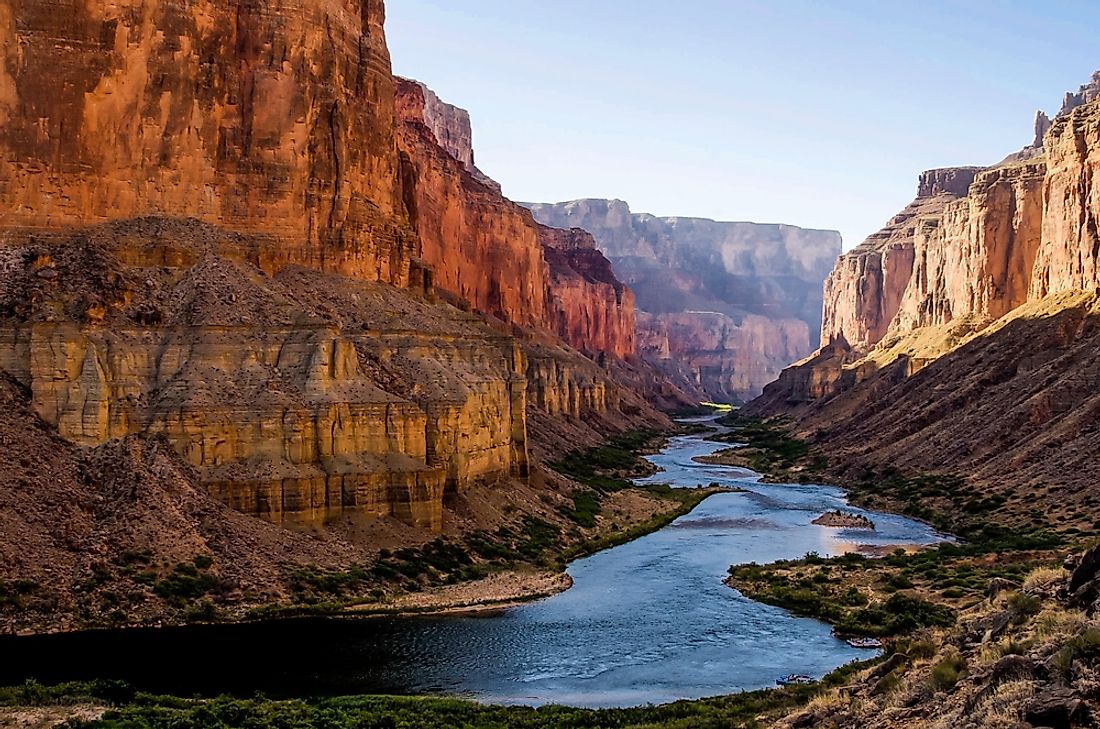What Is The Difference Between An Influent And An Effluent Stream?

The source of all streams is water from precipitation and groundwater. The ocean, land, and atmosphere play a vital role in the hydrological cycle by ensuring continued sustenance of drainage systems by directly feeding streams. These streams also interact with the ground by exchanging water. The interaction between rivers and groundwater varies along the river course, with the underlying riverbed influencing the percolation and discharge of water into and from the underground subsystem. There are two types of river classification based on how they interact with the underlying ground.
Types of Streams
Effluents Streams
All streams do not necessarily begin as runoff water, but they can emanate from the underlying water table. An effluent river system, also known as a gaining stream, is a river whose water originates from the groundwater beneath the surface, the local aquifer, and it increases in volume further downstream. Examples of effluent rivers include the Amazon River in South America, the Mississippi River in the United States, and the Columbia River in the Pacific North West of North America.
Influent Stream
An influent river, also known as a losing stream, a sinking stream, or a disappearing stream, is a type of stream that loses water as it flows downstream. Influent river systems lose most of their water to the underlying bedrock through percolation and enriching the underlying aquifer. Water loss is not only limited to percolation, but it can also occur through evaporation, plant use, and human or animal consumption. Some losing streams include the Nile River, which is one of the longest rivers in the world emanating from Lake Victoria in East Africa and draining into the Mediterranean Sea, as well as the Colorado River in the southwestern United States.
Differences Between Effluent and Influent Streams
Location
Effluent river systems are found mainly in tropical and temperate climates, while influent streams are found in arid areas. The tropical regions have surrounding hydrological systems, and the ground gets water from the surrounding lakes and bigger rivers. Due to the harsh climatic conditions in arid areas, influent streams lose a significant amount of water through evaporation. Losing rivers are also found in places with karst topography, where the underlying cave system captures water and ends up creating a subterranean river.
Height of the Surrounding Water Table
Effluent rivers receive water from the ground through their streambeds, and for groundwater to be discharged into the river, the height of the surrounding water table must be higher than the streambed’s elevation. The height of the streambeds of influent streams is usually higher than the altitude of the surrounding water table.
Flow Volume
An effluent stream receives water from the ground, and therefore it expands downstream by becoming deeper and broader. Influent streams are in arid areas and lose a lot of water through evaporation and seepage into the ground. The majority of effluent streams drain their water into the ocean, often carrying most of their sediments into the sea. Most influent rivers lose all of their water, drying up before even entering the sea.











